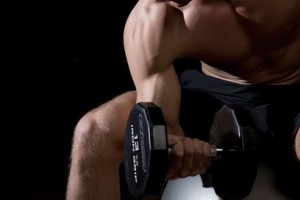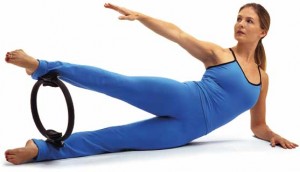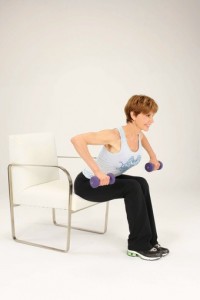
Before PIcs for the 3 month Boudoir Body Challenge with Haute Shots photography.
 Encore Personal Training member Warm-up
Encore Personal Training member Warm-up Encore Personal Training member Warm-up or Daily HW.
Encore Personal Training member Warm-up or Daily HW. A kettlebell is one of the more modern workout equipment pieces. It is a weight similar to a dumbbell that has been around for decades. It has only been recently that the wave of training with a kettlebell has taken place.
A kettlebell is one of the more modern workout equipment pieces. It is a weight similar to a dumbbell that has been around for decades. It has only been recently that the wave of training with a kettlebell has taken place.
This weight is a round circular ball with a handle attached to the top. Only one handle is used per kettlebell and each kettlebell comes in a particular weight. Various weights are used and begin around 4 kilograms in size. The weights can go up to higher than 60 kilograms. The different weights available give people the ability to modify their workout as time goes by. Through a consistent workout, one will be able to increase the weight to provide a more challenging workout program.
An effective use of a kettlebell can provide many health benefits. The trick to taking advantage of the health benefit is to be sure one is using the kettlebell correctly. Qualified instructors are available to teach kettle bell workouts and can assist a person in optimising their own individual workout.
One of the major health benefits found as a result of working out with a kettlebell is the increase in muscle strength. Weight training provides stronger muscles and so does a kettlebell workout. Muscles will begin to develop and increase in strength within the first few weeks of a workout. The reason for this is that a kettlebell is a weight and as such is used like other weight lifting devices.
Another major benefit of using a kettlebell as a primary workout is the increased endurance one will discover. The kettlebell workouts are a full head to toe body workout. This type of activity helps improve several different body systems. As a result of stronger and healthier body systems, people have more endurance because they are not as fatigued. Fatigue happens when the body has to work harder to function. Increasing activity, such as in a kettlebell workout, helps to improve the overall health of the body’s system.
One of the top benefits and one of the most popular reasons to train with a kettlebell is the increase of rapid weight loss. Weight loss is increased by working out with a kettlebell because this workout incorporates several body systems at once. Two of the biggest ones are strength training and cardiovascular.
Overall, a kettlebell workout provides several health advantages which is why so many are beginning a kettle bell workout.
 Props like this Pilates ring can help spice up your workout by challenging muscles in new ways. To add intensity to your obliques (side abdominal muscles) and adductors (inner thigh muscles), try this new move.
Props like this Pilates ring can help spice up your workout by challenging muscles in new ways. To add intensity to your obliques (side abdominal muscles) and adductors (inner thigh muscles), try this new move.
Sit upright on a mat or a padded, level surface with your feet flat on the floor, hip-width apart, and your knees bent. Place a Pilates ring between your thighs, just above your knees, and gently squeeze the ring with your inner thigh muscles. On an exhalation, contract your abdominals, bringing your navel to the spine, and lean back slightly. Remember to keep your abdominals firm and your chest lifted. Straighten your arms in front of your chest. Inhale and pause in this position.
On the next exhalation, rotate your upper torso to the right as you bend your right arm, moving your elbow back and your right hand toward your right shoulder. Maintain a slight squeeze with your inner thighs and keep your hips, knees and toes facing forward. Pause, then return to the center and repeat 12 times to the right. Repeat to the left.
 Looking for ways to cut back on what you eat? Try cutting everything into smaller pieces–you may eat less.
Looking for ways to cut back on what you eat? Try cutting everything into smaller pieces–you may eat less.
A study found that slicing candies in half caused people to eat less of the snacks, ultimately consuming fewer calories. The research, published in the May issue of the Journal of the American Dietetic Assn., put 54 college students through two scenarios: in one, 20 pieces of candy were served whole. In another, the 20 candies were cut in half. In both scenarios the test subjects busied themselves with a computer task that acted as a distraction, since snacking is often done while preoccupied. Don’t pretend you don’t do that.
Of all participants, 33 (almost all of them normal-weight women) ate some candy. During both tests people ate about the same number of pieces; in the test with smaller pieces people ate an average of 6.2 portions of candy, while in the test with larger pieces people age an average of 6.9 pieces.
Those who ate the larger pieces consumed about 60 calories more than those who ate the smaller pieces. No substantial differences were found in the groups regarding hunger, how much the test subjects liked the candies, and whether they ate candy on a regular basis.
Researchers also noted that the connection between the size of the food and how much people ate was not affected by variables such as age, food intake control, body mass index or how much time the participants spent exercising.
Future research, the authors wrote, should look at whether altering the size of food could cause men and women of all ages and BMI ranges to eat less.
Do you cut your food into smaller pieces to trick yourself into thinking you’re eating more? Do you have similar tips for cutting back on calories? Let us know.
–
Source: LA Times Health
 Get strong and balanced rear shoulder muscles by including this exercise in your weight routine. Sitting on a bench or chair makes it easier on your lower back when you lean forward. Begin with 3- to 5-pound dumbbells, then progress to heavier weights as you get stronger.
Get strong and balanced rear shoulder muscles by including this exercise in your weight routine. Sitting on a bench or chair makes it easier on your lower back when you lean forward. Begin with 3- to 5-pound dumbbells, then progress to heavier weights as you get stronger.
Sit on the front edge of a sturdy chair with your feet together directly below your knees. Grasp dumbbells in each hand and lean forward, maintaining a long spine. Reach both arms down, straight below your shoulders. Begin with palms turned in.
end your elbows out to the sides and rotate your hands backward. Pause for 2 seconds with your elbows at shoulder level and your hands near the outsides of your chest. It’s important to keep your shoulders relaxed down and away from your ears as you raise your arms. This way you’ll target the small muscles in the back of your shoulders, the rear deltoids. Perform three sets of eight to 12 repetitions.
–
Source: LA Times
 To intensify your abdominal training and avoid neck pain, try using a firm pillow behind your back. It’s an ideal way to support your back while focusing on small contractions to bring your chest toward your pelvis.
To intensify your abdominal training and avoid neck pain, try using a firm pillow behind your back. It’s an ideal way to support your back while focusing on small contractions to bring your chest toward your pelvis.
Sit on a level padded surface with a firm pillow placed behind your lower back. Bend your knees and place your feet on the floor, hip-width apart. Inhale to begin. On an exhalation, lean back slightly and press your navel toward your spine. Tuck your hips under and focus on pushing your abs firmly against the pillow. Stretch your arms forward, keeping your chest lifted and your abs contracted. Pause for two breaths.
Without releasing your abdominal contraction, inhale and slowly raise your arms until they are above your head. It’s very important to keep your navel pressed down toward the pillow and your toes pressed into the floor as you raise your arms. Pause in this position for a few seconds. Exhale and lower your arms to the start position. Repeat 12 to 15 times, then rest for 30 seconds. Do three sets.
–
Source: LA Times Health
Powered by WordPress